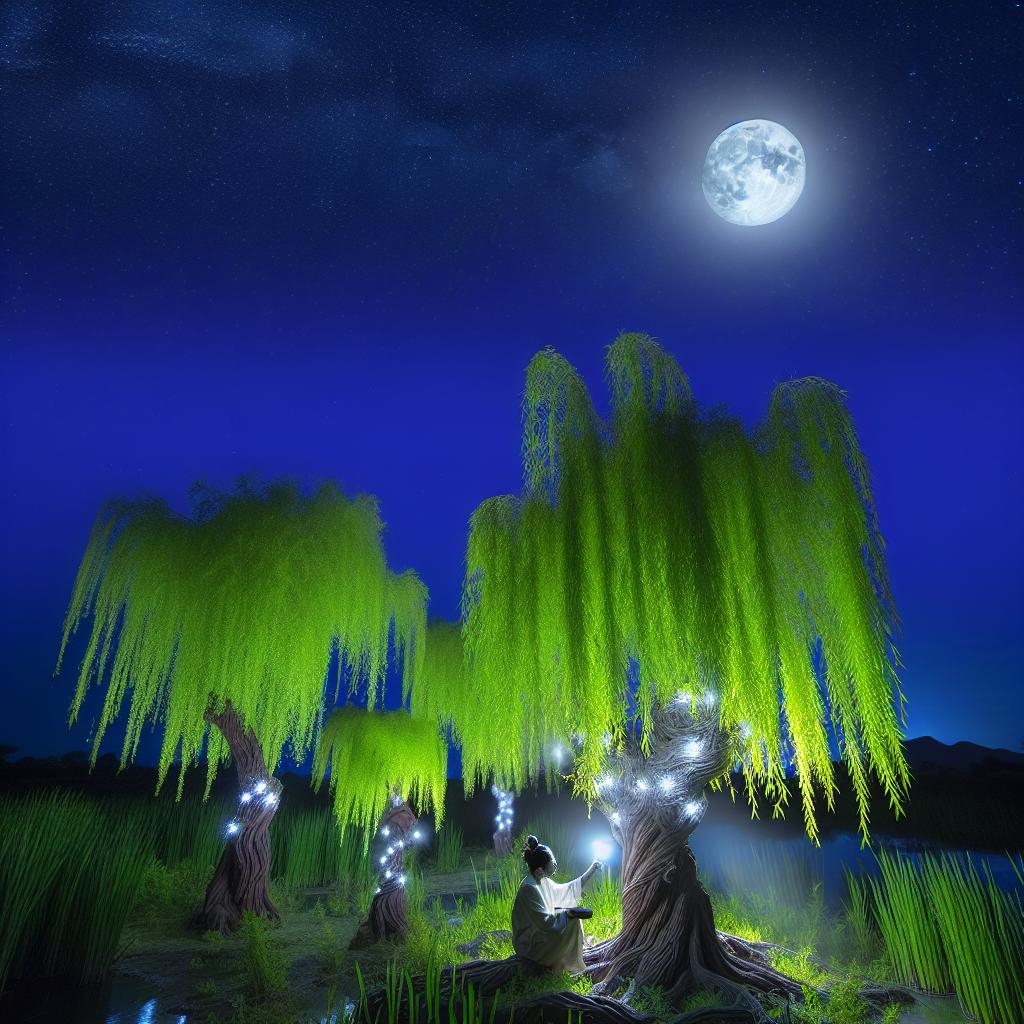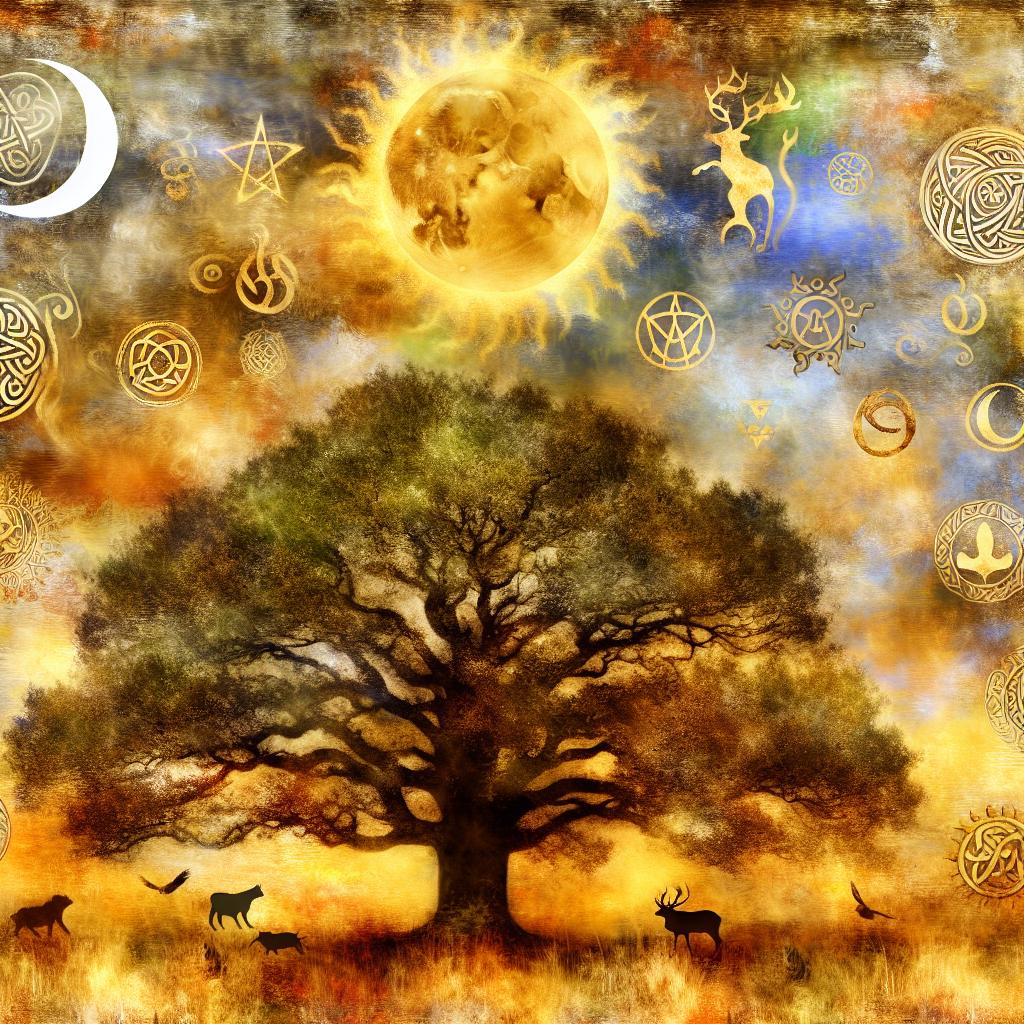Introduction to the Willow and Its Mythological Significance
The willow tree, often referred to as the “Moon Tree,” holds a revered status in various magical and mythological traditions. With its distinctive and graceful appearance, the willow’s drooping branches often convey an air of tranquility and mystery, inspiring wonder and contemplation. Its deep connection with the moon and water bestows the willow with a rich tapestry of symbolism and practical utility in magical rituals and practices.
Historical Context and Symbolism
Throughout history, the willow tree has held a special place in human imagination and spirituality. The plant’s flexible nature, demonstrated by its ability to bend under the pressure of wind and water without breaking, is metaphorically tied to the attributes commonly associated with the moon. These include intuition, emotion, and subtlety. Consequently, in numerous cultures around the world, the willow is seen as a symbol of growth, renewal, and adaptability—qualities that resonate on both a physical and spiritual level.
Willow in Different Cultural Traditions
In ancient Greek mythology, the willow was particularly sacred to Hecate, the goddess of the moon and magic, further illuminating its significance within lunar and magical contexts. Within the rich tapestry of Celtic traditions, the willow tree was associated with feminine energy. The tree was revered for reflecting the natural cycles of the moon and the tides, thus occupying a central role in various ritualistic practices dedicated to feminine deities and energies.
Practical Uses of Willow in Magic
When examining the magical uses of willow, its applications are as varied as its symbolism. Given its strong associations with water and the moon, willow branches are often employed in ceremonies aimed at promoting healing or serving as tools for divination. Due to these attributes, the wood of the willow is frequently used in crafting magical instruments, such as wands, reputed to enhance psychic abilities and intuitive insight.
Creating Healing Preparations
One of the notable elements of the willow, especially in herbal practices, is its bark. Willow bark contains salicin, a compound similar to aspirin, which results in its common use in herbal remedies for pain relief and anti-inflammatory purposes. In magical traditions, preparations made from willow bark or leaves are believed to assist with emotional healing, capitalizing on the willow’s inherent soothing and nurturing energy.
Incorporating Willow in Rituals
For those looking to harness the mystical properties of the willow in their magical practices, using its branches in ceremonies that emphasize lunar or water-based themes can be particularly beneficial. The energy invoked by the willow is said to enhance intuition and facilitate a connection with one’s emotional self, thus amplifying the effectiveness of mystical and introspective rituals.
Conclusion: The Modern Relevance of Willow
In contemporary times, the significance of the willow tree endures as a potent symbol and resource within various magical traditions. Its associations with the moon, water, and healing processes underscore its relevance in both historical contexts and modern-day spiritual explorations. Understanding and utilizing the willow tree in magical contexts serve as a bridge between ancient traditions and budding spiritual movements. Those interested in delving deeper into the use of plants in magic might explore comprehensive resources on botanical spirituality, while practical applications can be further explored through guides dedicated to crafting with natural materials for magical purposes.
Additional Aspects of Willow Symbolism
Beyond its magical uses, the willow tree holds significant ecological and environmental value. As a plant that thrives in damp soil, often near water bodies, it contributes to soil stability and aids in preventing erosion along riverbanks. This ecological role mirrors its spiritual symbolism; just as the willow prevents soil erosion, it aids in emotional stability and resilience through its mythical associations.
Willow’s Influence in Art and Literature
The willow’s melancholic beauty has inspired numerous works of art, literature, and music throughout history. In literature, for instance, the weeping willow is often used as a metaphor for loss and sorrow, yet its resilience and perpetual growth also symbolize hope and renewal—themes apparent in poetry, novels, and song lyrics across cultures.
In art, the willow’s elegant and flowing branches have been featured in paintings and sculptures, reflecting the mysterious and tranquil nature associated with the tree. Artists might use the willow to convey emotions or scenes that require the nuances of the symbolic meanings attributed to the tree, lending an ethereal quality to their creations.
The Future of Willow Research and Application
Research continues to reveal new insights into the willow’s properties. With ongoing studies into its medicinal benefits and potential applications in phytoremediation—using plants to clean and rehabilitate contaminated environments—the willow’s importance goes beyond cultural and spiritual practices. This research signifies that future applications might well improve ecological health and sustainability, reinforcing the tree’s deep connection to regeneration and adaptability in both spiritual and practical arenas.
In summary, the willow tree’s legacy as a symbol across various cultures and its modern-day relevance in ecological, medicinal, and magical practices highlight an ongoing journey of understanding and integration into humane and environmental contexts. As more is uncovered, the willow will likely continue to be a source of inspiration and function, demonstrating nature’s profound influence on humanity’s spiritual and practical pursuits.

